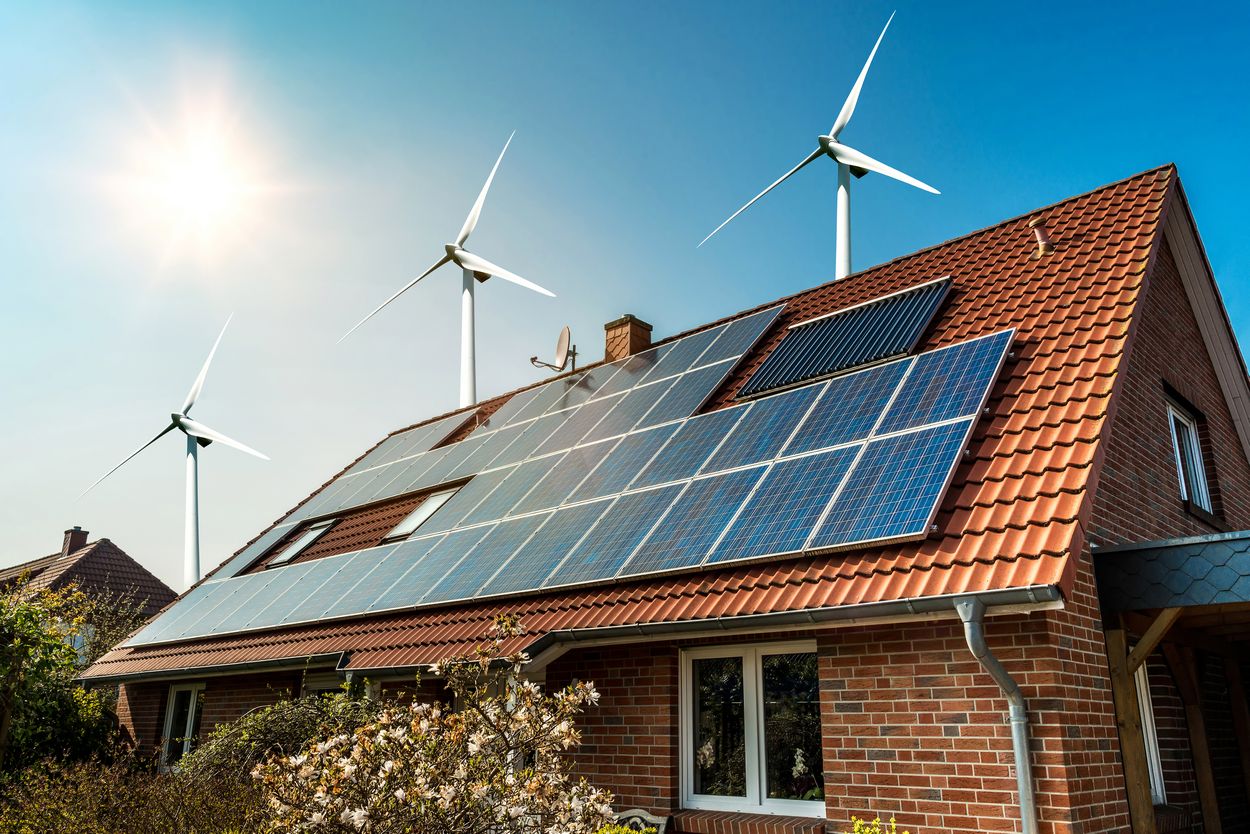Begin with Power Efficiency
Making the home energy-efficient prior to setting up a renewable energy system will conserve cash on electricity costs. Energy-efficiency enhancements can save energy and avoid warm or trendy air from getting away. Homeowners can get home power assessments and mount proper insulation, air securing, and ENERGY CELEBRITY- qualified windows, heating cooling equipment, kitchen area devices, and lights systems. Smart water usage, available daylight, proper landscaping, and indigenous plants can additionally enhance home effectiveness.
Include Renewable Resource
Once home energy-efficiency enhancements have been made, home owners are best positioned to think about choices for installing a renewable resource system.
Geothermal Warm Pumps
Geothermal heat pumps, also known as ground resource or water resource heatpump, transfer warm into and out of the home, making use of the ground as both a heat resource and a heat sink. These pumps can attain efficiencies two to three times higher than generally made use of air resource heatpump (ASHPs), because they rely upon the fairly consistent ground temperature levels to transfer warmth to or from a home. Across much of the United States, the temperature of the upper 10 feet of the ground stays between 45deg; deg; F and 75 deg; F, and typically in between just 50deg; deg; F and 60 deg; F. By comparison, air temperatures can vary, throughout a year, from listed below 0deg; deg; F to over 100 deg; F.Read about renewable-energy-advisors.com At website Geothermal heat pumps are lasting and resilient, and particularly furnished systems can likewise supply hot water throughout the summer. While acquiring and installing a geothermal heat pump costs more than mounting an ASHP system with comparable ability, the added costs can be recovered with power financial savings in 10 to 15 years compared to ASHPs.
Solar Water Heating
Solar water heaters utilize sunshine to warm water for the home. Solar water heating unit use insulated storage tanks and solar batteries to capture and keep heat from the sun, and warmth flowing water. Solar hot water heater need a backup system, such as conventional hot water heating units, when there is insufficient sunlight.
Solar Energy Solutions
Solar solar (PV) systems convert sunlight into electrical power. Solar power can create all or several of a homes electrical energy needs, relying on the variety of photovoltaic panels utilized, and can warm water too. With adequate sunlight, PV systems can harness power in hot and cold climates. The basic foundation of a PV system is the solar cell. Multiple solar batteries create modules called solar panels that vary in output from 10 to 400 watts. Panels are made to endure tornado and hailstorm damage and are immune to deterioration from ultraviolet rays. They are very trusted and need little upkeep. Panels are usually organized together on a building roof or at ground level in a shelf to create a PV variety. The selection can be placed at a repaired angle or on a tracking tool that follows the sun to take full advantage of sunshine capture.
Wind Power Equipment
Little household wind energy systems can produce all or a few of a homes electrical energy requirements(if enough land area and typical wind speeds are offered) and can be incorporated with solar and battery storage to offer emergency backup power. Wind wind turbines utilize the movement of the wind to transform a shaft connected to a generator, which makes electrical energy. The size of the wind turbine and the rate of the wind figure out just how much power it will certainly make. Regular household wind power systems have power scores ranging from 5 to 30 kilowatts. To be an appropriate candidate for a wind system, a home owner ought to contend least one acre of land and stay in a location that has an ordinary yearly wind speed of at least 10 miles per hour. The wind turbine tower height ought to be chosen based on the elevation of close-by wind blockages, such as buildings or plants, and are typically 60 to 140 feet high.
Estimated Expenses
Federal and state rewards can substantially lower the ahead of time expenses of mounting a renewable energy system. The Database of State Rewards for Renewables Effectiveness can assist house owners discover motivations near them. And also, renewable energy systems can spend for themselves gradually. Grid-connected solar and wind systems are especially cost-efficient because excess power is returned to the power grid and can gain house owners straight rebates or credit scores from local energy carriers.
- Solar PV systems cost about $3 per watt mounted. A 7,000 watt (7 kilowatt) system for that reason sets you back concerning $21,000 to set up. Such a system would offer 20 to 35 kilowatt-hours of electrical power per day, depending upon environment, and could satisfy most of a houses
- demand. Solar hot water systems can meet 50% of the warm water needs for a family members of 4 and generally price between $5,000 and $7,000 to install.
- Little wind energy systems cost an average of $5 per 120 kilowatts to install. Getting and installing a system can vary from $10,000 to $70,000, depending on regional zoning, allowing, and energy interconnection expenses.
Marketing Energy
Lots of home owners can market any kind of excess energy their solar and wind systems generate back to their utility carriers and, therefore, repay their renewable resource financial investments faster. Most states have actually established net metering regulations for consumers who produce excess electricity via solar, wind, or other systems and feed it into the grid. In internet metering, a bi-directional meter records both the electrical power the home draws from the grid and the excess electrical energy the house owners system feeds back into the grid.
